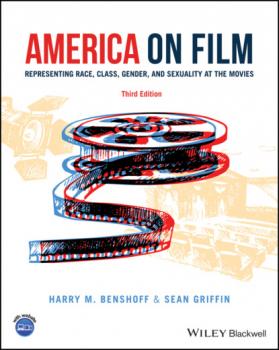John Wiley & Sons Limited
Все книги издательства John Wiley & Sons LimitedThe Digital Transformation of Logistics
The digital transformation is in full swing and fundamentally changes how we live, work, and communicate with each other. From retail to finance, many industries see an inflow of new technologies, disruption through innovative platform business models, and employees struggling to cope with the significant shifts occurring. This Fourth Industrial Revolution is predicted to also transform Logistics and Supply Chain Management, with delivery systems becoming automated, smart networks created everywhere, and data being collected and analyzed universally. The Digital Transformation of Logistics: Demystifying Impacts of the Fourth Industrial Revolution provides a holistic overview of this vital subject clouded by buzz, hype, and misinformation. The book is divided into three themed-sections: Technologies such as self-driving cars or virtual reality are not only electrifying science fiction lovers anymore, but are also increasingly presented as cure-all remedies to supply chain challenges. In The Digital Transformation of Logistics: Demystifying Impacts of the Fourth Industrial Revolution , the authors peel back the layers of excitement that have grown around new technologies such as the Internet of Things (IoT), 3D printing, Robotic Process Automation (RPA), Blockchain or Cloud computing, and show use cases that give a glimpse about the fascinating future we can expect. Platforms that allow businesses to centrally acquire and manage their logistics services disrupt an industry that has been relationship-based for centuries. The authors discuss smart contracts, which are one of the most exciting applications of Blockchain, Software as a Service (SaaS) offerings for freight procurement, where numerous data sources can be integrated and decision-making processes automated, and marine terminal operating systems as an integral node for shipments. In The Digital Transformation of Logistics: Demystifying Impacts of the Fourth Industrial Revolution, insights are shared into the cold chain industry where companies respond to increasing quality demands, and how European governments are innovatively responding to challenges of cross-border eCommerce. People are a vital element of the digital transformation and must be on board to drive change. The Digital Transformation of Logistics: Demystifying Impacts of the Fourth Industrial Revolution explains how executives can create sustainable impact and how competencies can be managed in the digital age – especially for sales executives who require urgent upskilling to remain relevant. Best practices are shared for organizational culture change, drawing on studies among senior leaders from the US, Singapore, Thailand, and Australia, and for managing strategic alliances with logistics service providers to offset risks and create cross-functional, cross-company transparency. The Digital Transformation of Logistics: Demystifying Impacts of the Fourth Industrial Revolution provides realistic insights, a ready-to-use knowledge base, and a working vocabulary about current activities and emerging trends of the Logistics industry. Intended readers are supply chain professionals working for manufacturing, trading, and freight forwarding companies as well as students and all interested parties.
America on Film
A comprehensive and insightful examination of the representation of diverse viewpoints and perspectives in American cinema throughout the 20th and 21st centuries America on Film: Representing Race, Class, Gender and Sexuality at the Movies, now in its third edition, is an authoritative and lively examination of diversity issues within American cinema. Celebrated authors and academics Harry M. Benshoff and Sean Griffin provide readers with a comprehensive discussion and overview of the industrial, socio-cultural, and aesthetic factors that contribute to cinematic representations of race, class, gender, sexuality, and ability. The book incorporates several different theoretical perspectives, including film genre, auteurism, cultural studies, Orientalism, the «male gaze,» feminism, and queer theory. The authors examine each selected subject via representative films, figures, and movements. Each chapter also includes an in-depth analysis of a single film to illuminate and inform its discussion of the chosen topic. America on Film fearlessly approaches and tackles several controversial areas of representation in film, including the portrayal of both masculinity and femininity in film and African- and Asian-Americans in film. It devotes the entirety of Part V to an analysis of the depiction of sex and sexuality in American film, with a particular emphasis on the portrayal of homosexuality. Topics covered include: The structure and history of American filmmaking, including a discussion of the evolution of the business of Hollywood cinema African Americans and American film, with a discussion of BlacKkKlansman informing its examination of broader issues Asian, Latin/x, and Native Americans on film Classical Hollywood cinema and class, with an in-depth examination of The Florida Project Women in classical Hollywood filmmaking, including a discussion of the 1955 film, All that Heaven Allows Perfect for undergraduate and graduate students in film, media, and diversity-related courses, the book also belongs on the shelves of anyone interested in diversity issues in the context of American studies, communications, history, or gender studies. Lastly, it's ideal for use within corporate diversity training curricula and human relations training within the entertainment industry.
Constitutional Oncogenetics
In the age of genomics, oncogenetics is a growing discipline. It is defined as the identification and management of families where there is a suspected hereditary risk of cancer. This relatively new discipline is part of a modern medicine that aims to be both preventive and predictive. <p><i>Constitutional Oncogenetics</i> gives precise descriptions of the main syndromes that cause a predisposition for cancer. The first part examines the most common syndromes in the majority of the world, including the heightened hereditary risk of breast and ovarian cancer and Lynch syndrome. The second part introduces less common infracentesimal syndromes, such as Bloom syndrome and Fanconi syndrome. This book is intended for oncogenetic practitioners and other specialists, as well as medical students.
Harlan's Crops and Man
A scientific and historical study of crops and their age-old relationship with human civilization The cultivation and harvesting of crops have been at the heart of human culture and development for thousands of years. As we have grown from hunter-gatherers into agrarian societies and industrial economies, our ongoing relationship with the plants that feed us and support our manufacturing has also evolved. So too, of course, have those plants themselves, with the combined forces of shifting climates, selective plant breeding, and genetic modification all working to alter their existence in profound and fascinating ways. Coming some 30 years after its previous incarnation, the third edition of Harlan’s Crops and Man marks an exciting re-examination of this rich topic. Its chapters lay out the foundations of crop diversity as we know it, covering topics that range from taxonomy and domestication to the origins of agricultural practices and their possible futures. Highlights include: Archeological and anthropological studies of agriculture’s history and development Detailed examinations of the histories and classifications of both crops and weeds Explanations of taxonomic systems, gene pools, and plant evolution Studies of specific crops by geographical region Updated to include the latest data and research available, this new edition of Harlan’s Crops and Man offers an illuminating exploration of agricultural history to all those engaged with plant science and the cultivation of crops.









